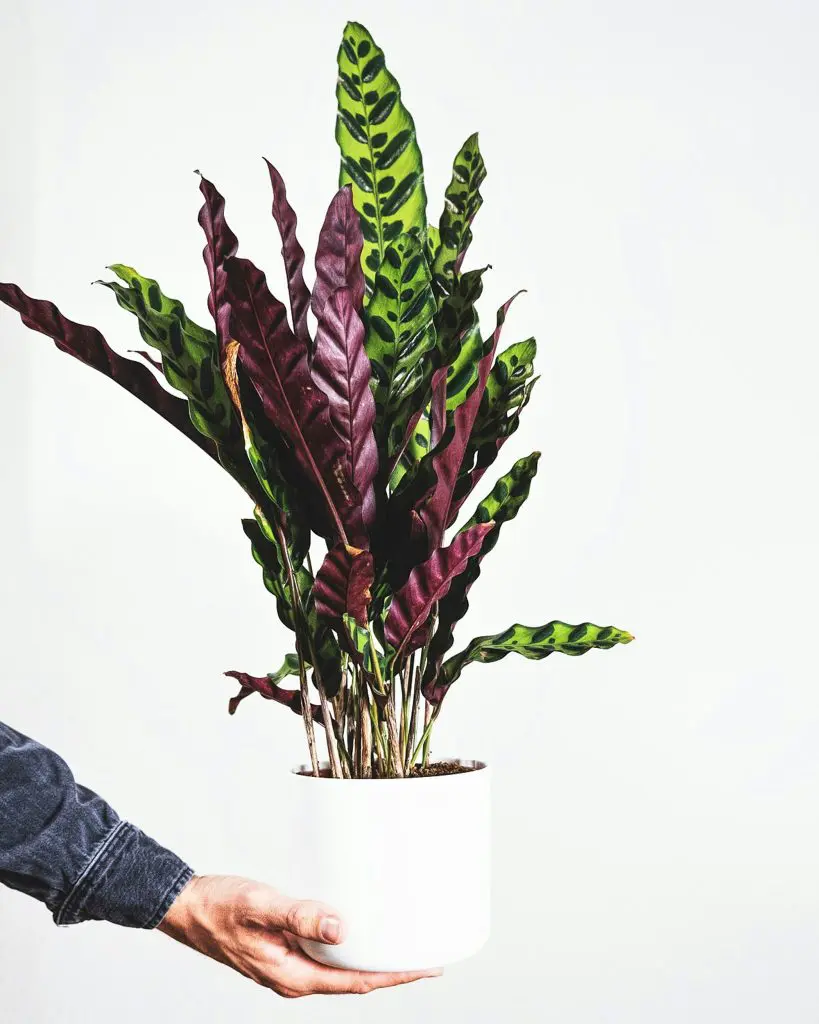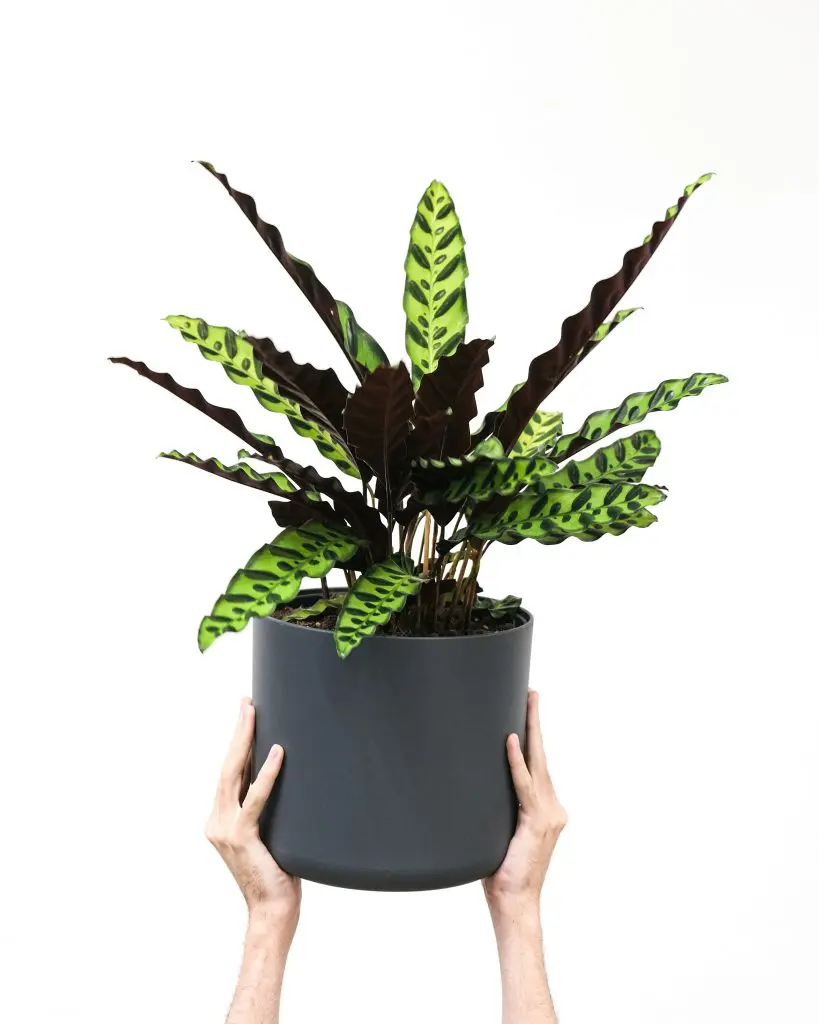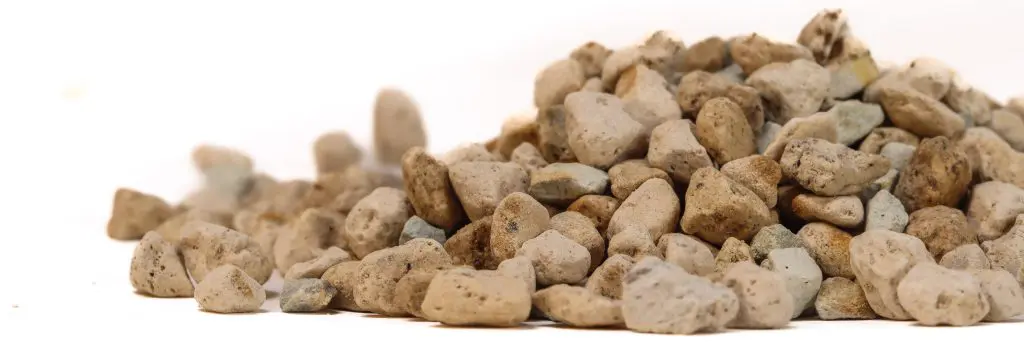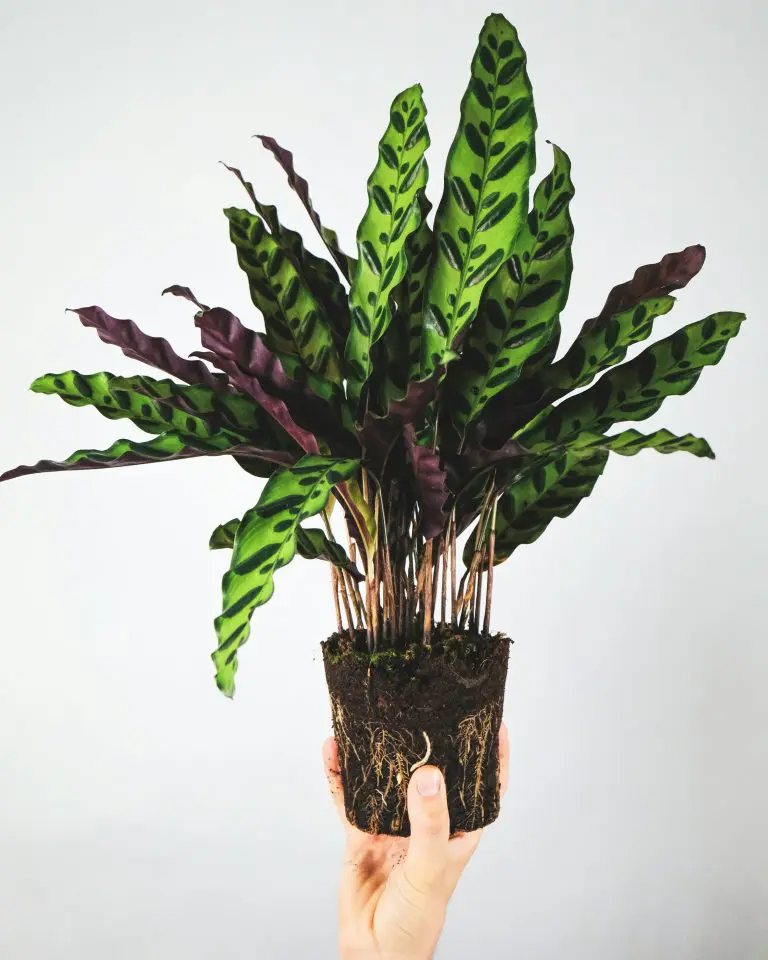



Calathea lancifolia is a striking foliage plant known for its long, lance-shaped leaves, which can grow up to 45 cm in length.
Latin name
Calathea lancifolia
Pronunciation
(“ka-LAH-thee-ah lan-si-FOH-lee-ah”)
Common name
Rattlesnake Plant
Origin
Native to the tropical rainforests of Brazil.
The leaves are light green with dark green markings that resemble the pattern of a rattlesnake’s skin, while the undersides are deep purple. Leaves rise in a rosette form and fold upwards at night in a prayer-like motion, a behaviour common to members of the Marantaceae (Prayer Plant) family.
This plant is prized as a decorative houseplant for its bold patterns and dramatic colouring. It prefers warm, humid conditions that replicate its native rainforest habitat.
Did you know?
Non-toxic to cats, dogs, and humans. Safe for households with pets and children.
caring for your plant

Light
Calatheas can be fussy about their locations, but prefer bright indirect sunlight. Position it further away from bright windows, but still lit by natural light.

Watering
Keep soil consistently moist but never soggy. Water when the top 2–3 cm of soil is dry. Use filtered or rainwater if possible, as tap water with high salts or chlorine may cause leaf spotting.

Pruning
Trim off yellowed or damaged leaves at the base to maintain appearance.

Feeding
Feed every 4–6 weeks in spring and summer with a diluted, balanced liquid fertiliser. Reduce feeding in winter.

pest & diseases
Can be affected by spider mites and aphids if air is too dry. Brown leaf edges are often a sign of low humidity or inconsistent watering.
Where the Calathea lancifolia originates from

This species is native to the tropical rainforests of Brazil.
Our plants are grown in Ecoponic, an alternative to soil. Officially known as a vulkaponic substrate, it replaces traditional compost with a clean, mineral-based medium that helps protect peatlands.
According to the IUCN UK Peatland Programme, “A loss of only 5% of UK peatland carbon would be equal to the UK’s annual greenhouse gas emissions.” As well as storing carbon, the natural wetlands where peat is found are critical to the survival of plants and wildlife. Ecoponic also improves plant health and uses water more efficiently.
Find out more about Ecoponic here.


Buy one of my cousins from the nursery
Did you know?
Plantopedia is brought to you as part of our Engage & Bloom workplace experience program.
explore more
Why not continue your journey through the plant world. Explore more plants, their stories, habitats and the benefits they bring to spaces.











